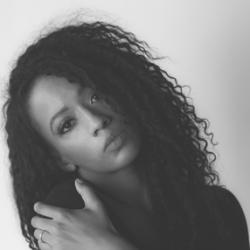
Recently, I’ve been thinking of June Jordan and the last lines of her inspiriting poem, “Poem for South African Women”, in which also lives the title of Alice Walker’s profound meditation, We Are The Ones We Have Been Waiting For.
Jordan’s poem references the ‘dompas’, which were part of the apartheid system (and existed in much earlier versions as a literary practice of slavery) used to segregate and to limit the mobility of black Africans, particularly men. The passbooks often contained written, detailed personal information about their owners. Passbooks could be demanded in public at any moment by whites or police. Failure to present the ‘dumb pass’ would result in arrest, or worse.
The epigraph of Jordan’s poem is this:
Commemoration of the 40,000 women and children, who, August 9, 1956, presented themselves in bodily protest against the “dompass” in the capital of apartheid. Presented at The United Nations, August 9, 1978.



In photographs of the 1956 protest, thousands of women, some carrying their children on their backs, hold their fists in the air. These images reflect protest as active. Mouths are opened. Eyes are wide. Bodies are standing upright. As I read Jordan’s epigram again, I finally realized that part of my unconscious had been working since August or longer so as to guide me toward Jordan.
On August 9, 2014 Mike Brown was shot in Ferguson, Missouri. His bloodied body, left uncovered by authorities, remained inert, face down in the middle of the street, for over four hours. This image, recurrent in various incarnations, has been an integral part of the American canon in politics, language, education,and imagination.
Recently, I’ve been observing headliner photographs of “die-ins” where protesters peacefully assume a posture of ‘death’ in public places. It’s allowed me to continue to think and to write about how bodies serve individuals and/or a national imagination. These images also ask me to think of bodies and silence. I’ve been interested in the notion of how a “die-in” appears within language.
It was an early shock to realize that inside of a book I could sometimes expect my own black body to be gagged and captured, serving both as host and hostage, by language. As a girl, reading as much as I could was a way to withstand death after death. It was a way of freeing myself from certain systemic deaths and spiritual mutilations, sometimes self-inflicted. I could move among the provinces of books without being asked, in a sense, for my papers.
Unlike so many people in the early part of American history and elsewhere, I will not be arrested, tortured, or discriminated against because I am educated, conscious, and thus, in a way, possess the power, in many but not all respects, to write a different story. Reading, for me, is not an act of fear or an act that threatens to kill or enslave me and yet there are writers and readers who have, in their writing and their reading, killed me in the gallows of their beloved and indefatigable ‘Other’.
On a global level, I observe how threatening (even life-threatening) a woman with an education is to her own community, sometimes even, her own immediate family. Her education and literacy can be stoned or set on fire, just as easily as her body, for the authority she demands to make decisions for her life. I think of the violence that can occur between bodies and books. How the violence becomes doubled and multiplies itself within collective memories and collective amnesia. How passbooks are clear kin to the identification cards of the Holocaust. How historical images of piles of burning books or what the meaning of those banned book symbolizes is to be understood through force and silence.
When I look at the list of books I’ve included here, I try to imagine these books as bodies, as protests, as experiential spaces of multi-layered truths.
Through the ‘die-ins’ of these pages, justice, courage, and imagination rise and stand in vocabularies stained with blood and chalk outlines.
For me, an alternate canon is not a reactive action, but an assertion of authority, voice, freedom, and identity through which I am recognized and included, despite the spaces and privileges that consider certain writers (and their bodies of work) as ‘marginal’. When I think about what power and privilege mean, I sometimes think of Toni Morrison’s words, “If you’re going to hold someone down you’re going to have to hold on by the other end of the chain.”
A narrative without complexity is like a head with no face. This is what I sometimes think of canon-izing. We’re not getting a fully formed face, which prohibits many of us from recognizing, loving, respecting, or hearing ourselves. To oppress and control the narrative is to disfigure and exploit the dignity of our humanity. To write, to witness is to accept the full bodies, real, imagined, and haunted, of our lives in the immediate time during which we live. And we attempt to contribute to a full story, rather than an oppressed one, to be shared with our future as well as our past.
There is, for all of us, a symphonic reckoning that continues to speak, to whisper, to question. The voice of Audre Lorde’s questions speak clearly and quietly, “What are the words you do not yet have? What do you need to say? What are the tyrannies you swallow day by day and attempt to make your own, until you will sicken and die of them, still in silence?”
The articulations of these books have spent years within my own black body. Stanzas, syllables, silences, and screams have bloomed, fallen, shone, and seeded themselves inside of me. I’ve carried each of these books around at some point in my life, holding their worn, treasured edges, folding, and re-folding their amber pages as if my life depended on it. My life did depend and does depend on the oxygen and freedom these words offer. In any of these books you will find courage, guilt, kindness, rage, desire, history, memory, violence, shame, pride, and fear. You will find human beings.
In this continuous discovery I can be open to limitless transformation through language and action. I try to get the words as close as possible to the light and promise of our flesh.
Here is the ending of June Jordan’s poem:
And who will join this standing up
and the ones who stood without sweet company
will sing and sing
back into the mountains and
if necessary
even under the sea
we are the one we have been waiting for
Join us, stand, sing, and Stop Waiting.
Alternate Canon
Ai, The Collected Poems of Ai
Ryunosuke Akutagawa, A Fool’s Life
James Baldwin, Collected Essays
Toni Cade Bambara, The Salt Eaters
Eavan Boland, A Woman Without a Country
Gwendolyn Brooks, Selected Poems
Marie Cardinal, The Words to Say It
George Elliott Clark, George and Rue
Lucille Clifton, The Collected Poems of Lucille Clifton 1965 – 2010
Maria Elena Cruz Varela, Ballad of the Blood
Henry Dumas, The Selected Poetry of Henry Dumas
Buchi Emecheta, The Bride Price
Nikky Finney, Head Off & Split
Mavis Gallant, The Collected Stories
Christopher Gilbert, Across the Mutual Landscape
Lorraine Hansberry, To Be Young, Gifted and Black
H.D., Collected Poems
Bob Kaufman, Solitudes Crowded with Loneliness; The Ancient Rain
Adrienne Kennedy, Adrienne Kennedy Reader
Carole Maso, Break Every Rule: Essays on Language, Longing, and Moments of Desire
Herta Müller, The Hunger Angel
Marie NDiaye, Three Strong Women
Muriel Rukeyser, Collected Poems of Muriel Rukeyser
Alice Walker, We Are The Ones We Have Been Waiting For
Margaret Walker, For My People

is a poet and photographer. She received an MFA in Creative Writing from Sarah Lawrence College. A Cave Canem and Kimbilio Fellow, she is the recipient of fellowships including Yaddo, Provincetown Fine Arts Work Center, Cave Canem Foundation, Vermont Studio Center, The Millay Colony, and others. In 2011, Griffiths appeared in the first-ever poetry issue in Oprah’s O Magazine. She is widely known for her literary portraits, fine art photography, and lyric videos. Griffiths recently completed her first extensive video project, P.O.P (Poets on Poetry), an intimate series of micro-interviews, which gathers nearly 100 contemporary poets in conversation, is featured online at the Academy of American Poets’ website. Griffiths is the author of Miracle Arrhythmia, The Requited Distance, and Mule & Pear. Her most recent full-length poetry collection was a finalist for the 2015 Balcones Poetry Prize and the 2016 Phillis Wheatley Book Award in Poetry. Currently, Griffiths teaches creative writing at Sarah Lawrence College and IAIA (Institute of American Indian Arts). She lives in Brooklyn, New York.











